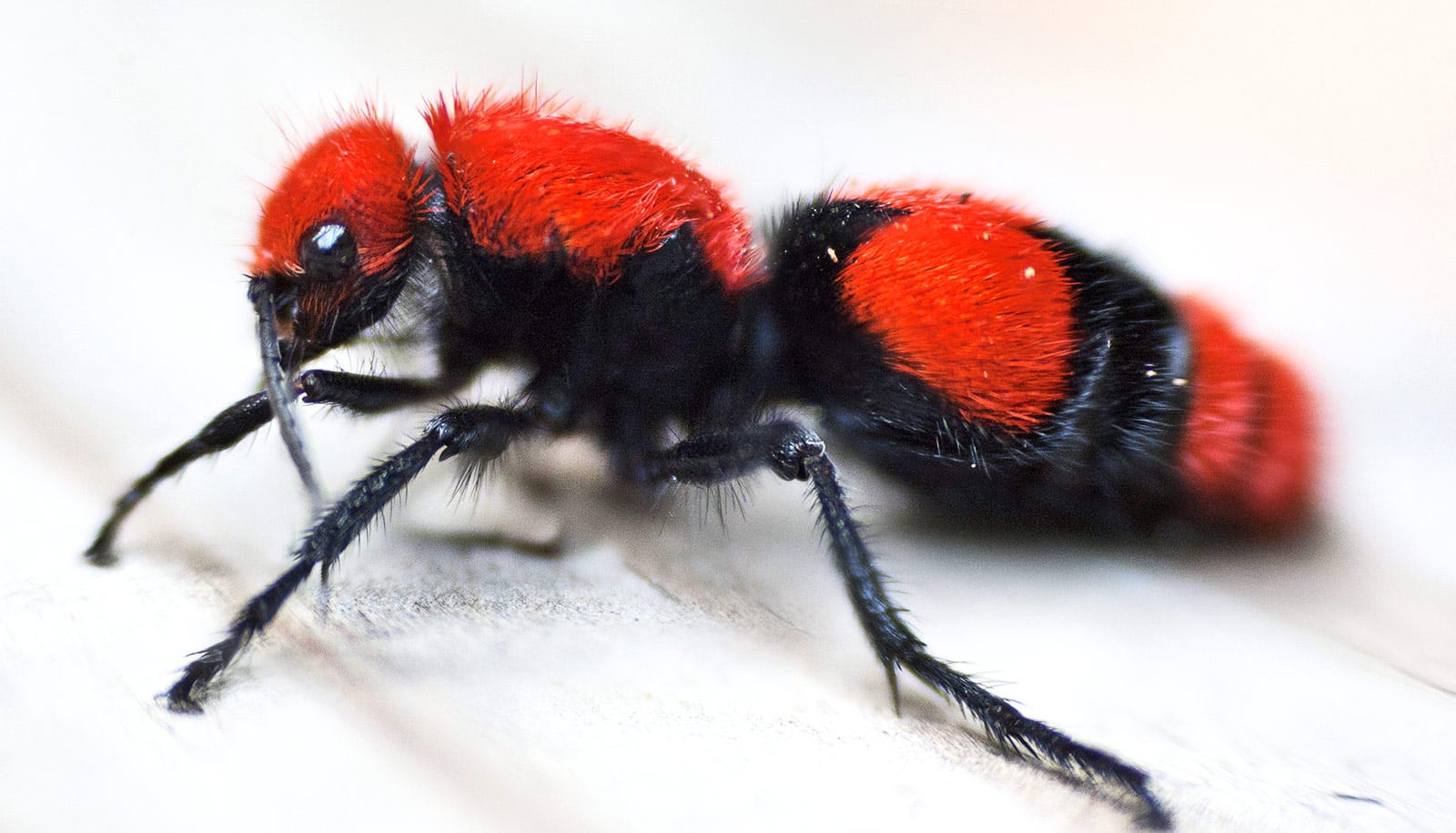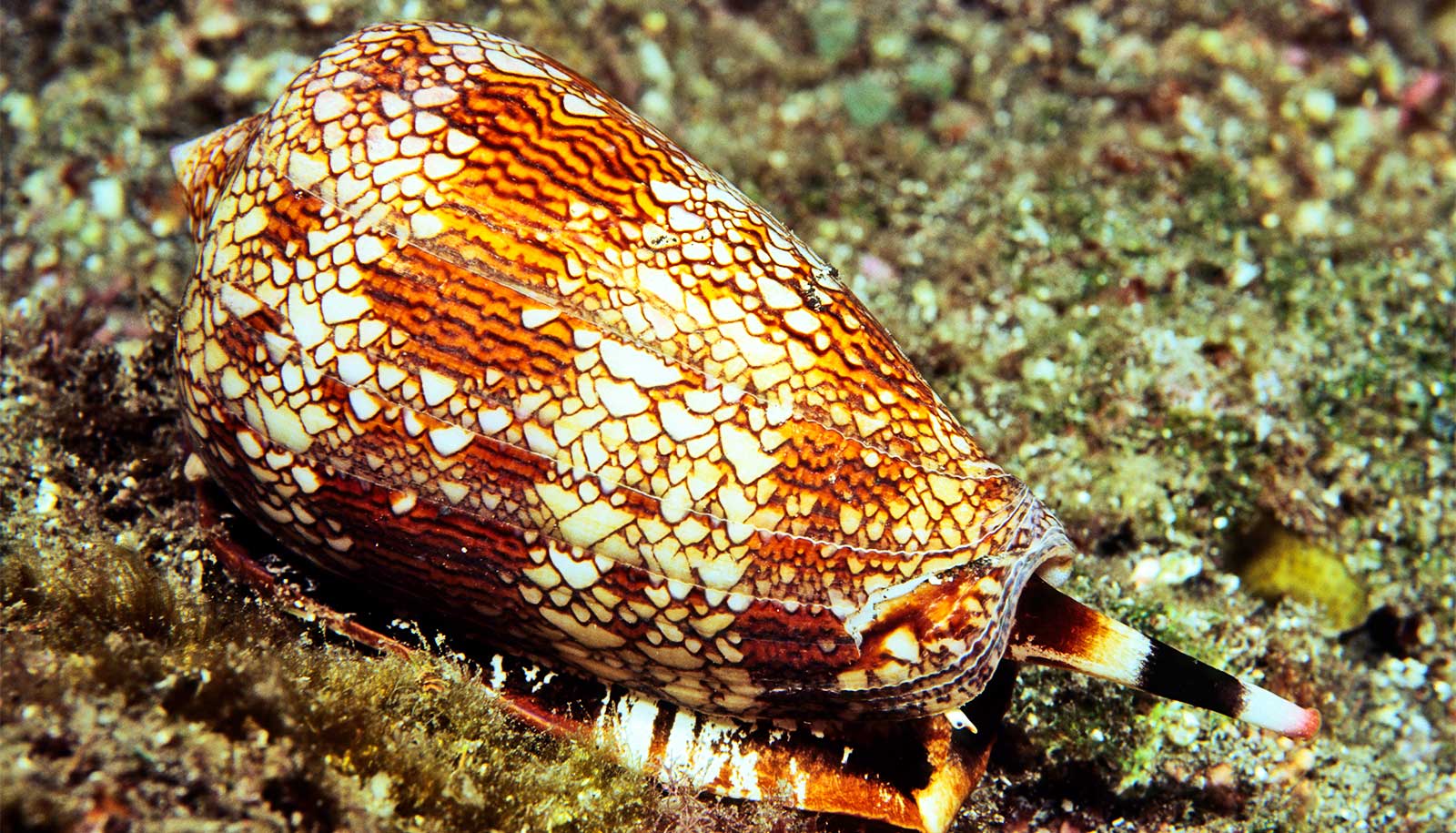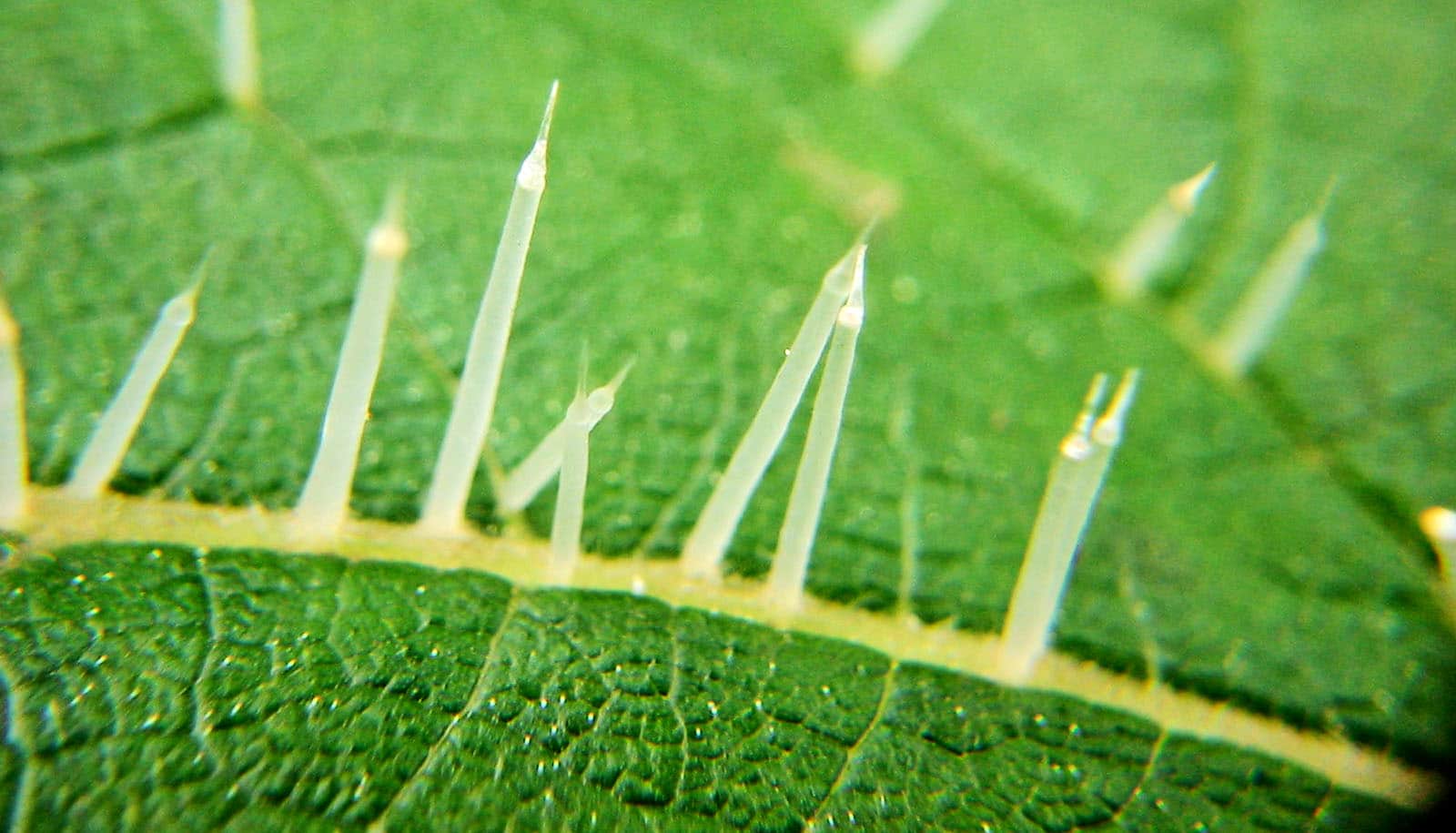A new study investigates why velvet ant stings are among the most excruciating in the animal kingdom.
The work also offers a fascinating glimpse into the evolutionary arms race between predators and prey—while providing insights that may inform pain-related medical research.
The Scarlet Velvet Ant, which is actually a type of wasp, has a venomous sting that is described as explosive and akin to “hot oil from the deep fryer spilling over your entire hand.” But while the sting is incredibly painful, it’s not particularly toxic, which suggests that its primary function is to act as a deterrent rather than to kill.
The insect’s sting, along with its striking red-and-black coloration, serves as a warning to predators and an enduring reminder of its formidable defense mechanisms.
Velvet ants, including the Scarlet Velvet Ant, are commonly found in the southern and eastern United States. They thrive in dry, sandy environments, and are often seen scurrying on the ground in search of nectar or other insects to parasitize.
To understand how their venom works, the researchers turned to common fruit flies, Drosophila melanogaster, a common model organism for studying biological processes.
The study authors focused on how the venom interacts with nerve cells responsible for sensing pain. These cells, called nociceptors, respond to potentially harmful stimuli like extreme heat or sharp pressure. In fruit fly larvae, a specific group of these pain-sensing neurons was found to react strongly to velvet ant venom, even at extremely diluted concentrations.
The team identified a key venom ingredient—a peptide called Do6a—that activates these nociceptors. Peptides are short chains of amino acids, and this particular one, Do6a, triggers pain-sensing ion channels in insects. (Ion channels are specialized proteins embedded in the membranes of cells that allow ions—charged particles—to pass in and out of the cell.) This ion movement is crucial for various physiological processes, including nerve impulse transmission, muscle contraction, and maintaining the cell’s resting potential.
Notably, the targeted ion channels known as Pickpocket/Balboa (Ppk/Bba) in fruit flies bear a striking resemblance to Acid-Sensing Ion Channels (ASICs) found in vertebrates, including mammals and humans, highlighting a fascinating evolutionary link in how different organisms process pain stimuli.
“Our study findings suggest that velvet ants target the pain-sensing systems of evolutionarily distant animals, including vertebrates, like mammals and birds, and invertebrates, like other insects, but it does so through different mechanisms” says Lydia Borjon, assistant scientist in in the Tracey Lab at the Gill Institute for Neuroscience at Indiana University.
“We expected the simplest solution, that the venom would act through related receptors in both insects and mice, but we were surprised to find that this was not the case.”
In fruit flies, the Do6a peptide is highly specialized and potent, while in mammals, other components of the venom—less potent and more generalized peptides—trigger the pain response.
“Not only is Do6a a very strong activator of insect pain-sensing neurons, it is also the most abundant peptide in the venom. This implies that the defense against other insects was an important factor in the evolution of the venom contents,” Borjon adds.
This led the researchers to test the venom’s effectiveness against another insect species. They observed how praying mantises responded to being stung. The mantises displayed clear avoidance behaviors, underscoring the venom’s role as a powerful deterrent in the insect world.
“This research underscores the incredible precision of evolutionary adaptations,” says Dan Tracey, a professor in the biology department and chair of neuroscience.
“Velvet ants have refined their venom to exploit specific molecular targets in a way that maximizes their survival advantage. It is remarkable that the venom evolved to target the nociception systems of vertebrates and invertebrates with such precision.”
The researchers used advanced imaging techniques to observe how nerve cells in fruit fly larvae reacted to venom. They also conducted genetic experiments to confirm the role of Ppk/Bba ion channels. When these channels were removed or deactivated, the nerve cells stopped responding to the venom, proving that the channels are essential for the venom’s effects.
When it came to vertebrates, the researchers tested the venom on mice. They found that certain peptides in the venom caused the mice to exhibit pain-related behaviors, such as licking, flinching, or shaking the injected paw. However, the Do6a peptide, which was so potent in insects, had no noticeable effect on the mice, highlighting the venom’s species-specific adaptations.
“Exploring how velvet ant venom affects different species provides valuable insights into pain pathways, with potential implications for advancing medical research” says Luana Assis Ferreira, a postdoctoral researcher in the Hohmann Lab at the Gill Institute.
“For instance, the study highlights how specific ion channels are involved in triggering pain. Such knowledge might one day help scientists develop new painkillers or treatments for chronic pain by targeting similar pathways in humans.”
While velvet ant’s venom is a marvel of evolutionary engineering, the broader implications are equally compelling.
“This study provides a framework for exploring how other animal venoms work, especially those that target pain pathways. Venoms are a treasure trove of bioactive compounds, and studying them often leads to breakthroughs in pharmacology and medicine,” says Andrea Hohmann, a professor in the psychological and brain sciences department and chair of neuroscience.
“This research offers a deeper appreciation of nature’s complexity and the power of natural selection, in that the velvet ant’s sting is a carefully honed defense mechanism that ensures its survival in a dangerous world filled with potential predators, says Tracey.
“And with these findings, we’re one step closer to understanding, and maybe even harnessing, its power.”
The study appears in Current Biology.
Source: Indiana University



